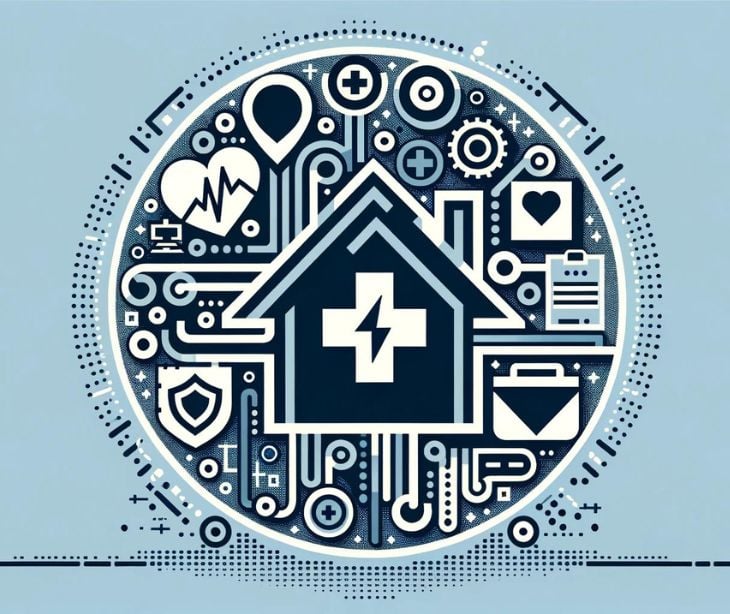
As a leading organization representing physicians in the United States, the American Medical Association (AMA) actively engages in various initiatives to address and improve the professional, legislative, and practical aspects of medical practice. This includes efforts in combating physician burnout, promoting physician-led care, and addressing public health concerns like firearm injuries and the opioid crisis.
What is the AMA?
Founded in 1847, the AMA has a long-standing history of acting in the development of medical standards, the advancement of medical science, and the establishment of cornerstone healthcare policies. Based on the AMA advocacy effort document one of their most recent goals is, “Continuing to advocate at all levels of government and across the payer community to find workable solutions to the Change Healthcare cyberattack that allow practices to maintain financial stability while providing timely care.”
It also sets ethical guidelines for the medical profession, advocates for physicians and patients at the federal and state levels, and works to improve public health. The AMA also publishes research, conducts surveys, and sets standards for medical education, practice, and ethics. Its influence extends to various aspects of healthcare, including policy formation, public health initiatives, and support for medical education.
See also: Staying up to date with regulatory changes in healthcare
What are the key areas of focus in the AMA's advocacy efforts?
The AMA's commitment to addressing both the immediate and long-term challenges facing physicians and the healthcare system.
- Medicare payment reform: Advocating for changes in how Medicare compensates physicians, including efforts to establish inflation-based payment updates and reform the payment system to better align with current medical practice costs and realities.
- Prior authorization processes: Working to streamline and simplify the prior authorization requirements imposed by insurance companies, which can be time-consuming and may delay patient care.
- Physician burnout: Addressing the growing issue of physician burnout by advocating for better work conditions, mental health support, and systemic changes to reduce the administrative burden on healthcare providers.
- Promoting physician-led care: Ensuring that medical care is directed and led by qualified physicians, opposing legislation that may dilute the quality of care by undermining the role of trained medical doctors.
- Supporting telehealth: Advocating for policies and infrastructure that support the effective use of telehealth in medical practice, including efforts to make certain telehealth flexibilities permanent post-pandemic.
- Public health initiatives: This includes efforts to address issues like firearm injuries, the opioid crisis, and improving nutrition and food policies in various programs.
- Insurance and payment issues: Working on resolving issues related to insurance policies, such as the No Surprises Act, to ensure fair and transparent payment processes for medical services.
- Physician workforce challenges: Addressing the impending physician shortage by advocating for more Graduate Medical Education (GME) slots and funding, and supporting programs that encourage people to enter the medical profession.
See also: HIPAA Compliant Email: The Definitive Guide
Challenges the AMA currently faces in its advocacy efforts
- Political polarization: Navigating a highly polarized political environment can make it challenging to advance healthcare policies, as different political groups may have opposing views on key healthcare issues.
- Healthcare cost and access: Addressing the rising costs of healthcare and ensuring equitable access to medical services for all populations, particularly in a system with varied insurance coverages and disparities in healthcare access.
- Physician shortage and workforce issues: Tackling the growing problem of physician shortages, particularly in primary care and in rural areas, and addressing workforce issues like diversity and inclusion in the medical profession.
- Legislation affecting practice autonomy: Opposing legislation that may impact the autonomy of physicians in their practice, such as laws limiting the scope of practice or imposing restrictive oversight.
- Healthcare system fragmentation: Navigating and advocating within a fragmented healthcare system, where care is often disjointed due to a lack of comprehensive coordination among various healthcare providers and systems.
- Resistance to change within the medical community: Overcoming resistance or slow adaptation to changes within the medical community itself, can hinder the implementation of necessary reforms.
See also: How rural healthcare organizations can protect data
FAQs
Does the AMA have power over healthcare organizations that contradict their advocacy goals?
The AMA does not have direct power over healthcare organizations but can influence practices through advocacy, guidelines, and policy recommendations.
What is the purpose of physician advocacy?
The purpose of physician advocacy is to promote public health and patient care improvements through political, social, and legal efforts.
Who does the AMA advocate for?
The AMA advocates for physicians and patients to advance the profession of medicine and improve public health.
Subscribe to Paubox Weekly
Every Friday we'll bring you the most important news from Paubox. Our aim is to make you smarter, faster.




